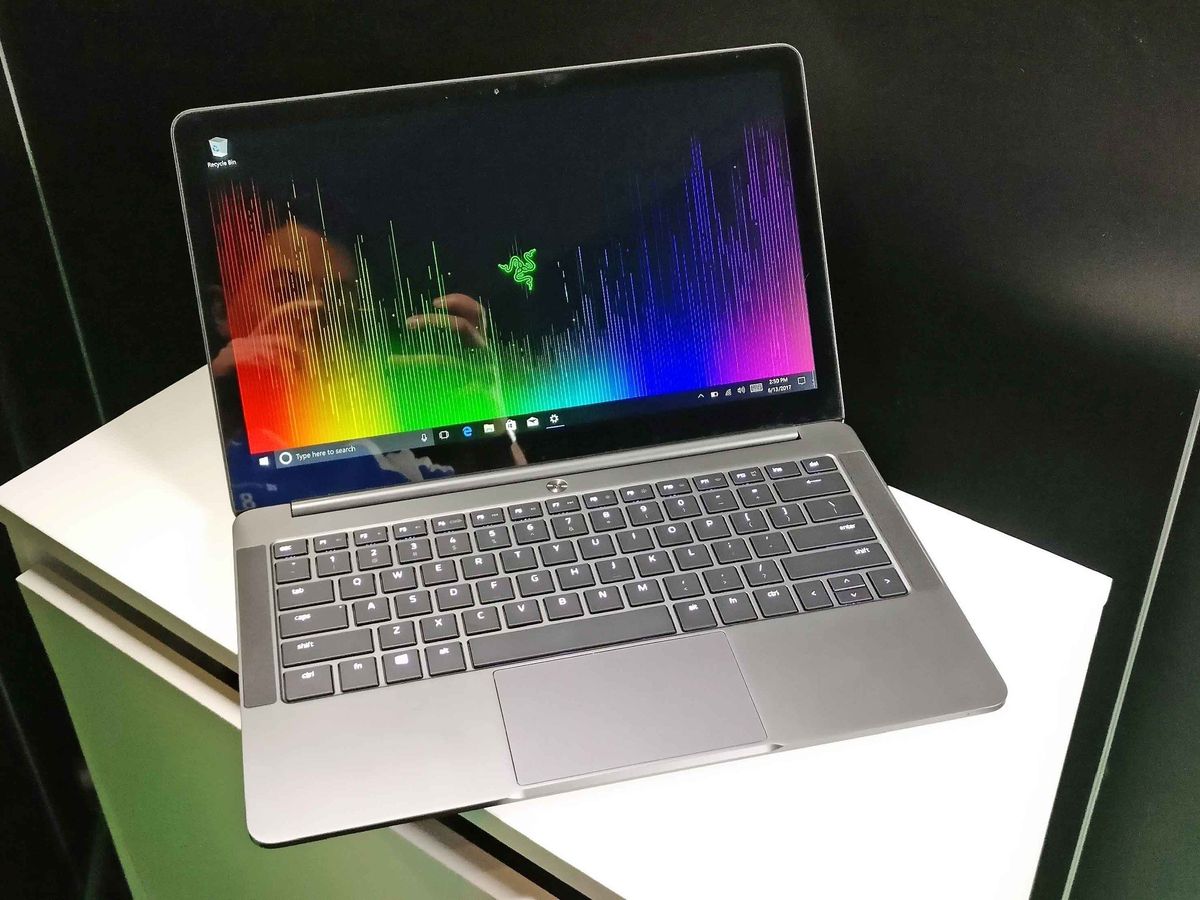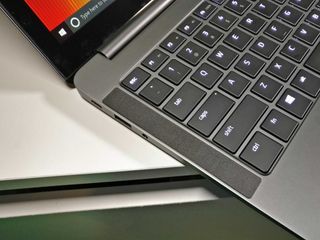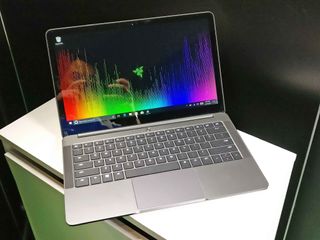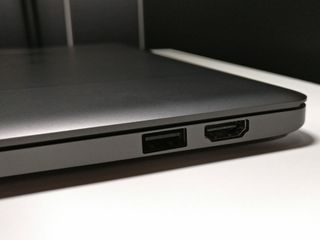Razer Blade Stealth 2017 gets gray color option and thinner bezel
Razer's Blade Stealth Ultrabook gets a bit more professional with an updated CPU, larger display, and a new gray finish.

Razer announced a significant refresh to its Blade Stealth, the popular dual-core gaming Ultrabook that weighs less than three pounds.
We got some hands-on time with the new laptop at E3 2017 and came away impressed. Very impressed. Here is what's new, improved, and why Razer is proving it understands what gamers want.
Razer Blade Stealth 2017
The Blade Stealth, (see our 2016 review) with its 12.5-inch 4K display, quickly became one of the most popular gaming-focused Ultrabooks of the last few years. And it attracted more than just gamers with its super thin design and CNC-machined aluminum chassis. Apple fans who want to trade in their Macs for a Windows PC often check out the Razer line, and the Blade Stealth is a popular choice for converts.

However, the Blade Stealth always had a few complaints from the non-gaming crowd. For example, some users didn't like the glowing Razer logo, and the display bezels were awfully wide. Razer addressed that and other issues with this latest refresh. Here is a list of the major changes:
- 13.3-inch QHD (3200 x1800) IGZO display (new).
- 50 percent smaller bezels (new).
- Optional gunmetal gray finish with white backlit keys (new).
- Precision touchpad (new).
- Seventh-generation Kaby Lake Core i7-7500U processor (updated).
- Up to nine hours battery (improved).
- 16GB of RAM (up from 8GB).
That is a significant shift in design. Luckily, pros and gamers who still want a 12.5-inch 4K display can still grab that version in all black.
Larger display
Instead of the 4K 12.5-inch screen users can also now get the optional 13.3-inch QHD IGZO touchscreen instead, which fits in the same chassis.
Get the Windows Central Newsletter
All the latest news, reviews, and guides for Windows and Xbox diehards.

The result are bezels that are 50 percent thinner than before, addressing one of the biggest complaints from owners. To put it bluntly, the Blade Stealth now looks like a normal laptop with a 16 x 9 aspect ratio.
Razer also claims 100 percent sRGB color accuracy and up to 400 nits of color brightness with the display.
Goin' gray
Not everyone loves the matte-black look of the Blade Stealth, nor the glowing green snake on the front lid. Razer addressed this by offering a new gunmetal gray scheme that looks outstanding. Not only does it look more professional, it appears to hide fingerprints a bit better than that matte-black chassis.
In place of the glowing green snake logo is a simple non-glowing dark silver one. Again, the goal is to make a laptop you can carry into a business setting without advertising that you're a gamer.


The color scheme choice is also deeper. There is no color Chroma keyboard backlighting. Instead, you get normal white. And the USB ports are black instead of green. While some will see these as "boring," for many people that is exactly what they wanted. Since Razer is keeping the black version with Chroma anyway, the optional choice is welcome.
More precise touchpad
Razer has always had good touchpads, but the new one it outstanding. The large, glass navigation area is now Precision-certified using Microsoft drivers to ensure accurate and consistent cursor movement, which means the device can take full advantage the gestures in Windows 10.

Being a Precision stickler myself, I'm very excited to see this change.
New guts, new glory
The new Razer has a dual-core Core i7-7500U "Kaby Lake" processor, reducing system heat and extending battery life slightly to about nine hours.

Instead of an 8GB option, the Blade Stealth only comes in 16GB configurations now – something that Razer says its customers preferred.
Storage still comes in 256GB, 512GB, or 1TB of PCIe NVMe solid state drive (SSD) options, and my hunch is they will be made by Samsung.
Razer Blade Stealth 2017 specifications
| Category | Specification |
|---|---|
| Color | Traditional black or gunmetal with tone-on-tone Razer logo (USA only) |
| Display | 13.3-inch IGZO 16:9 aspect ratioCapacitive multi-touch display |
| Resolutions | QHD+ (3200 x 1800)100 percent sRGB Touch IGZO Panel |
| CPU | Intel Core i7-7500U Processor (2.7 GHz, 3.5 GHz) |
| Graphics | Intel HD Graphics 620 |
| Storage | 256GB, 512GB, or 1TB PCIe SSD options |
| RAM | 16GB dual-channel system memory (LPDDR3-1866MHz) |
| OS | Windows 10 (64-bit) |
| Wi-Fi | Killer Wireless-AC 1535 (902.11a/b/g/n/ac + Bluetooth 4.1) |
| Ports | Thunderbolt 3 (USB-C)Two USB 3.0 ports (SuperSpeed)HDMI 2.0a audio and video output3.5 mm headphone and microphone combo port |
| Camera | Built-in front-facing webcam |
| Lighting | Chroma anti-ghosting keyboard with individually backlit keys |
| Audio | Top-firing built-in stereo speakersBuilt-in array microphone |
| Security | Trusted Platform Module (TPM 2.0) security chip embedded |
| Power | Compact 45 W USB-C power adapter |
| Battery | Built-in 43.6 Wh rechargeable lithium-ion polymer battery |
| Dimensions | 0.52 in. (13.1 mm) [height] x 12.6 in. (321 mm) [width] x 8.1 in. (206 mm) [depth] |
| Weight | 2.93 lbs. (1.33 kg) |
Summary
Overall, I'm very excited about the new Blade Stealth, and I love the changes Razer made because it is clear the company is listening to its audience. It's not an easy task building a gaming PC that also caters to students and professionals, but the company is making all the right decisions.

Combined with full Thunderbolt 3 and Type C, users can take this super thin laptop home and connect to the Razer Core external GPU (eGPU; $499 or $399 if purchased with a Blade Stealth) for serious gaming.

You can order one today starting at $1,399 from RazerStore.com. Later this month, you can find the laptop in Best Buy (online and physical), Microsoft Stores (online, and physical) and Amazon.com. Itwill be available in U.S., Canada, UK, Germany and France.

Daniel Rubino is the Editor-in-chief of Windows Central. He is also the head reviewer, podcast co-host, and analyst. He has been covering Microsoft since 2007 when this site was called WMExperts (and later Windows Phone Central). His interests include Windows, laptops, next-gen computing, and wearable tech. He has reviewed laptops for over 10 years and is particularly fond of 2-in-1 convertibles, Arm64 processors, new form factors, and thin-and-light PCs. Before all this tech stuff, he worked on a Ph.D. in linguistics, performed polysomnographs in NYC, and was a motion-picture operator for 17 years.